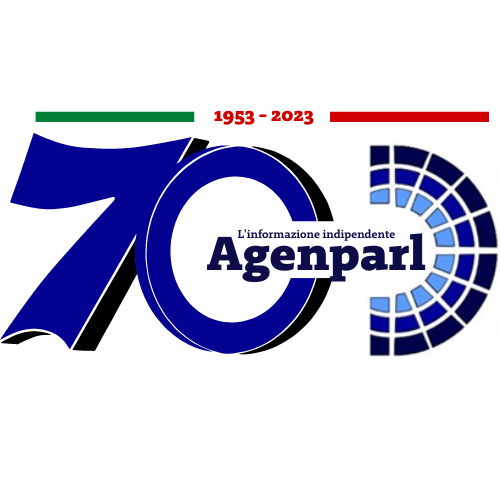 (AGENPARL) - Roma, 9 Marzo 2023
(AGENPARL) - Roma, 9 Marzo 2023— A new exhibition exploring the reflections of Frederick
Douglass on image-making, race, and citizenship opens this spring at the Wadsworth Atheneum
Museum of Art and The Amistad Center for Art & Culture. Co-curated by Henry Louis Gates, Jr.
and Sarah Elizabeth Lewis, the exhibition brings together rare nineteenth century
daguerreotypes—on public view for the first time—with an immersive film work by contemporary
artist Sir Isaac Julien that meditates on Douglass’ life and times. I Am Seen…Therefore, I Am:
Isaac Julien and Frederick Douglass is on view May 18 through September 24, 2023.
The exhibition was conceived to mark the 180th anniversary of Douglass’ first visit to Hartford in
May 1843. When Douglass stood outdoors on Hartford’s Main Street on the grounds of Center
Church to speak out for the end of slavery, he would have seen the Wadsworth Atheneum,
founded in 1842, under construction directly across the road. Douglass in 1861 would call his
era an “Age of Pictures” and considered the capacity to make and enjoy pictures one of the
distinguishing characteristics of human beings.
When the Wadsworth Atheneum opened its doors in 1844 it contained the very first public
gallery for the enjoyment of pictures in the United States. This collaborative exhibition, between
the Wadsworth Atheneum and The Amistad Center for Art & Culture, reflects on the profound
impact of Douglass to the cause of freedom and the importance of pictures and picture-making
to our nation.
“Douglass understood the importance of who is represented in society, and how they are
represented, to a functioning democracy. This issue of representation has never been more
urgent for museums in this country. I am delighted that 180 years after the greatest American
visited the City of Hartford, we can honor his legacy and pay heed to the lessons he can teach
us today,” said Matthew Hargraves, Director of the Wadsworth Atheneum.
Throughout his impressively productive and extraordinarily successful career, Douglass—who
was born enslaved and died a statesman—anticipated the inevitably fraught relations among
race, representation, and justice with which we, his heirs, still grapple today. Marking Professor
Gates’ first curatorial endeavor, the exhibition is a dialogue between the local and the
international, between Douglass’ encounters with Hartford, Connecticut, and the continuing
national and international reach of his unfinished movement for social justice for African
Americans. The exhibition centers upon Douglass’ first anti-slavery speech in Hartford in 1843,
and his subsequent speeches in the city: during the Civil War in 1864, in Allyn Hall, on the rights
of Black soldiers; and in 1883, during the rollback to Reconstruction, on the life of John Brown.
Sir Isaac Julien’s immersive five-screen film installation Lessons of the Hour anchors the
exploration of the visionary abolitionist whose work amplifies his own. An acclaimed Londonbased Black filmmaker and installation artist, Julien’s works break down the barriers between
artistic disciplines to construct powerful visual narratives through multi-screen film installations.
Seen in the Northeast for the first time and in its five-screen version, the 25-minute video
installation weaves Douglass’ writings with filmed reenactments of his travels and contemporary
protest footage, underscoring Douglass’ relevance and resonance today.
Julien’s work is presented alongside the work of pioneering African American photographers of
the period, bringing the enduring legacy of Frederick Douglass into clear focus. Among these is
prodigious photographer Augustus Washington, one of the few known African American
daguerreotypists, who based his practice in Hartford before emigrating to Liberia in 1853. On
public view for the first time and drawn from the singular collection of Greg French, a selection
of rare daguerreotypes also pays tribute to the many individuals who patiently sat before the
photographic lens, inviting further research into these subjects’ anonymous identities and their
still largely unheralded lives.
The enthralling images offer transfixing, thought-provoking reminders that rights in the United
States have been secured and retained not only by laws and social customs and norms, but
also by how we see and refuse to see “the other.” The exhibition raises important questions that
continue to resonate: What is the relationship between visual representation and being seen
both in culture and society—the right of citizens to be accorded recognition justly, and their “selfevident” right to representation in a democracy?
“Frederick Douglass is central to American history and his life, times, contributions, and image
are well-represented in The Amistad Center’s collection. We are thrilled to have this opportunity
to continue to share Douglass’ story with museum visitors and celebrate him in this
extraordinarily multi-faceted and collaborative exhibition,” said Olivia White, Interim Executive
Director of The Amistad Center for Art & Culture.
“These extraordinarily arresting images, frozen both in and beyond time, bespeak a history of
American slavery and race relations that begs to be written,” said Henry Louis Gates, Jr., the
Alfonse Fletcher University Professor and Director of the Hutchins Center for African and
African American Research at Harvard University, and an Emmy Award-winning filmmaker.
Gates is perhaps most widely known for serving as host of the popular PBS series Finding Your
Roots, now in its ninth season.
“Isaac Julien’s masterwork of a film and the stunning daguerreotypes in the exhibition are not
only a meditation on Frederick Douglass’ signal importance for our age, and but also tribute the
unfinished movement Douglass began to consider the critical role of cultural representation for
American democracy anew,” said Sarah Elizabeth Lewis, associate professor of history of art
and architecture and African and African American studies at Harvard University and the
founder of Vision & Justice.
Lewis was at the Wadsworth last April to deliver the inaugural Pennington Lecture, Vision &
Justice, named for the Rev. Dr. James W.C. Pennington, a notable leader, educator, and
leading abolitionist, who pastored Talcott Street Church during the same era as Douglass’
speech in Hartford. The lecture was presented in conjunction with The Amistad Center for Art &
Culture and Capital Community College.
Opening Artist Conversation
Friday, May 19
5pm gallery viewing and reception, 6pm conversation
Exhibition curators Profs. Henry Louis Gates, Jr. and Sarah Elizabeth Lewis talk with artist Sir
Isaac Julian about the ways image and history weave throughout his work, Lessons of the Hour.
Tickets will be available via thewadsworth.org.
Exhibition Support
I Am Seen…Therefore, I Am: Isaac Julien and Frederick Douglass is made possible through the
generous support of The Larsen Fund for Photography, The Cheryl Chase and Stuart Bear
Family Foundation, David T. Langrock Foundation, The Edward C. And T. Roberts Foundation,
Travelers, Mally and James Cox-Chapman, M. D., and the Wadsworth Exhibition Fund
supported by the Estates of James Lyon, Karen Kelleher, and Susannah Shickman.
About the Wadsworth Atheneum Museum of Art
Founded in 1842 with a vision for infusing art into the American experience, the Wadsworth
Atheneum Museum of Art is home to a collection of nearly 50,000 works of art spanning 5,000
years and encompassing European art from antiquity through contemporary as well as
American art from the 1600s to today. The Wadsworth’s five connected buildings—representing
architectural styles including Gothic Revival, modern International Style, and 1960s Brutalism—
are located at 600 Main Street in Hartford, Conn.
Current hours are noon–5pm Thursday–Sunday. Admission: $5–15; discounts for members,
students, and seniors. Free admission for Hartford residents with Wadsworth Welcome
registration. Free “happy hour” admission 4–5pm. Advance ticket registration via
thewadsworth.org is encouraged, not required. Phone: (860) 278- 2670; website:
thewadsworth.org.
About The Amistad Center for Art & Culture
In 1987, a handful of visionaries that included Trustees and staff of the Wadsworth Atheneum
Museum of Art, joined forces with independent foundations, corporations and the State of
Connecticut and formed The Amistad Foundation in order to purchase, protect and provide
public access to the Randolph Linsly Simpson Collection then housed in the collector’s
farmhouse in Northford, CT.
This extraordinary collection, which now consists of 7,000 works of art, artifacts and archives,
documents more than 300 years of the artistic, literary, military, enslaved and free life of Black
Americans—truly a treasure and a rich resource of immense educational value and testimony to
America’s diverse and dynamic culture. In addition to collection care and development, The
Amistad Foundation was intended to take on the broader tasks of preserving and interpreting
African American culture and history and correcting the misrepresentation and underrepresentation of this important aspect of our country’s evolution.
Images from left: Isaac Julien, J.P. Ball Studio, 1867 Douglass (Lessons of the Hour), 2019.
Framed archival pigment print mounted on aluminum. Wadsworth Atheneum Museum of Art.
The Douglas Tracy Smith and Dorothy Potter Smith Fund. Courtesy of the artist, Victoria Miro,
and Jessica Silverman, San Francisco; George Kendall Warren, Frederick Douglass, 1879.
Albumen print on Cabinet Card. The Amistad Center for Art & Culture.
